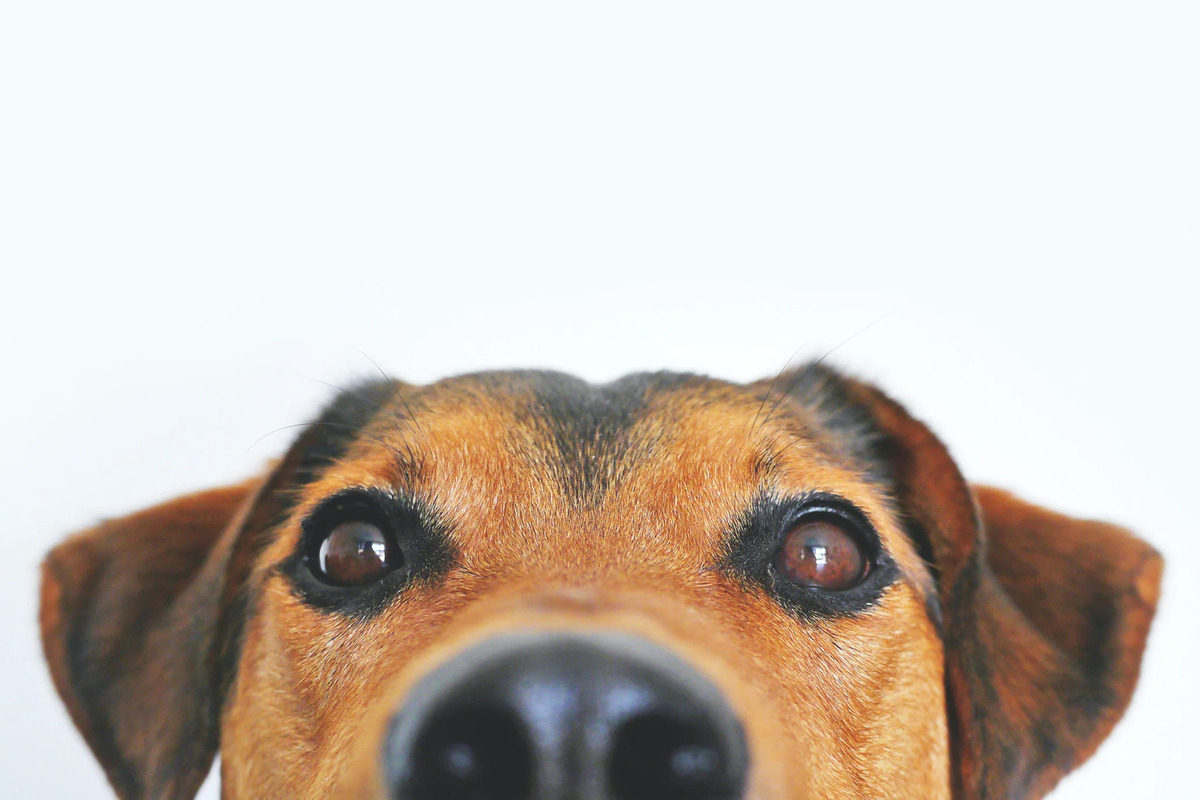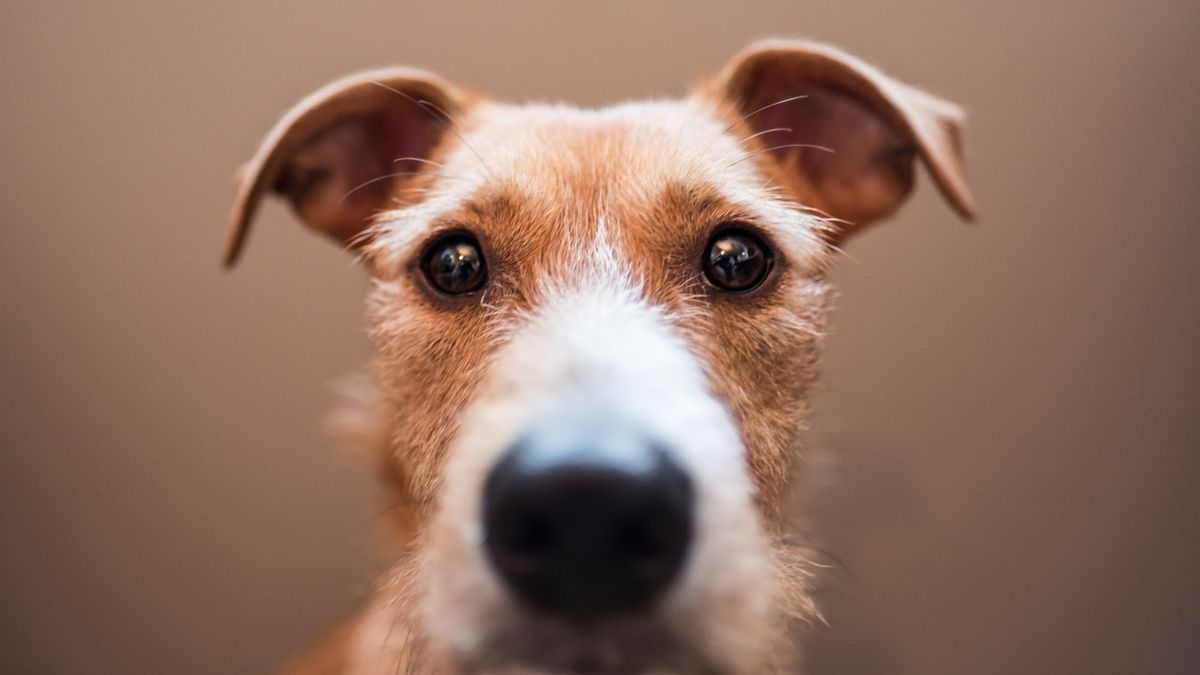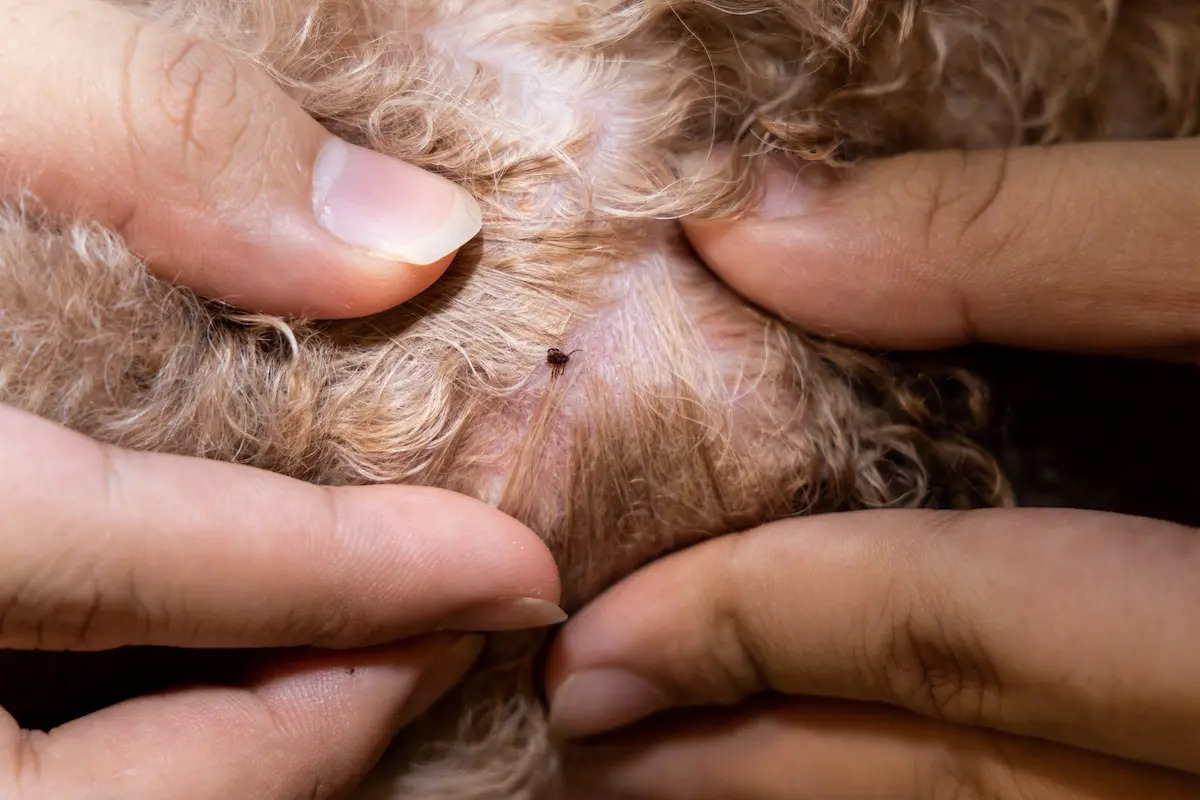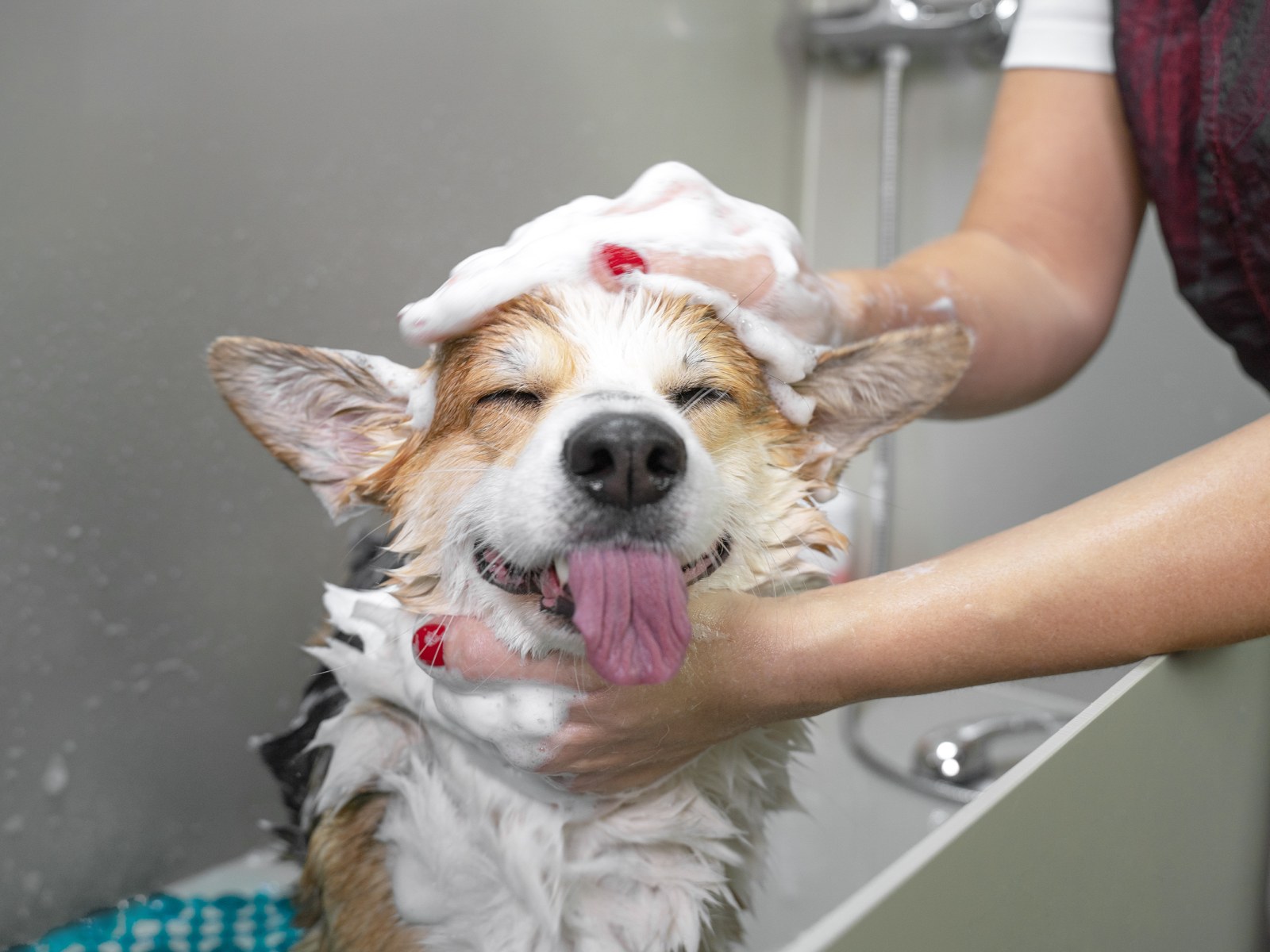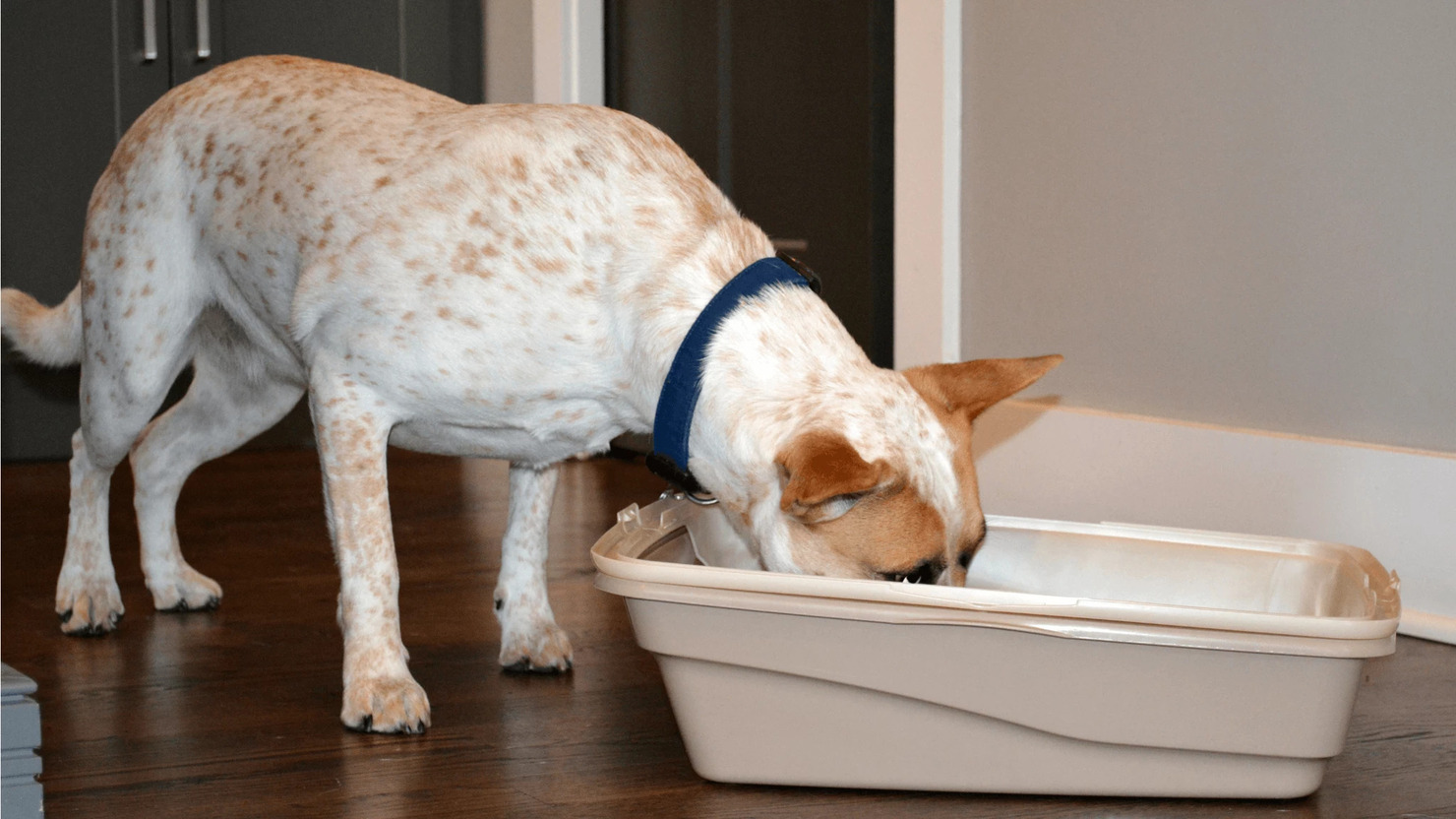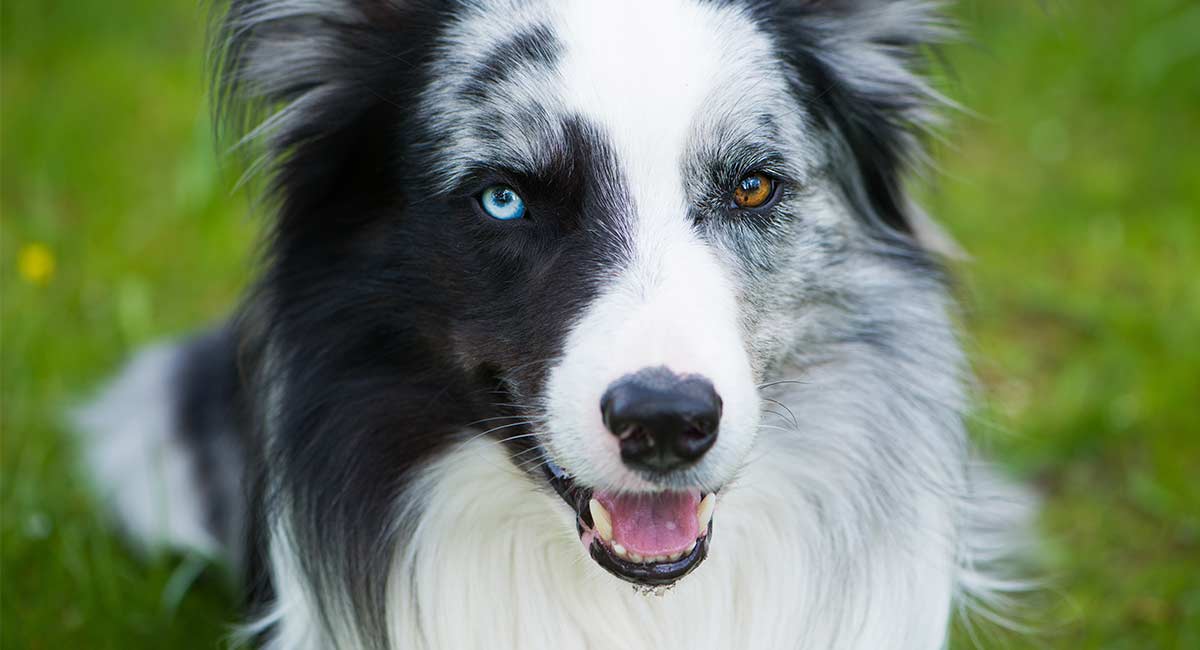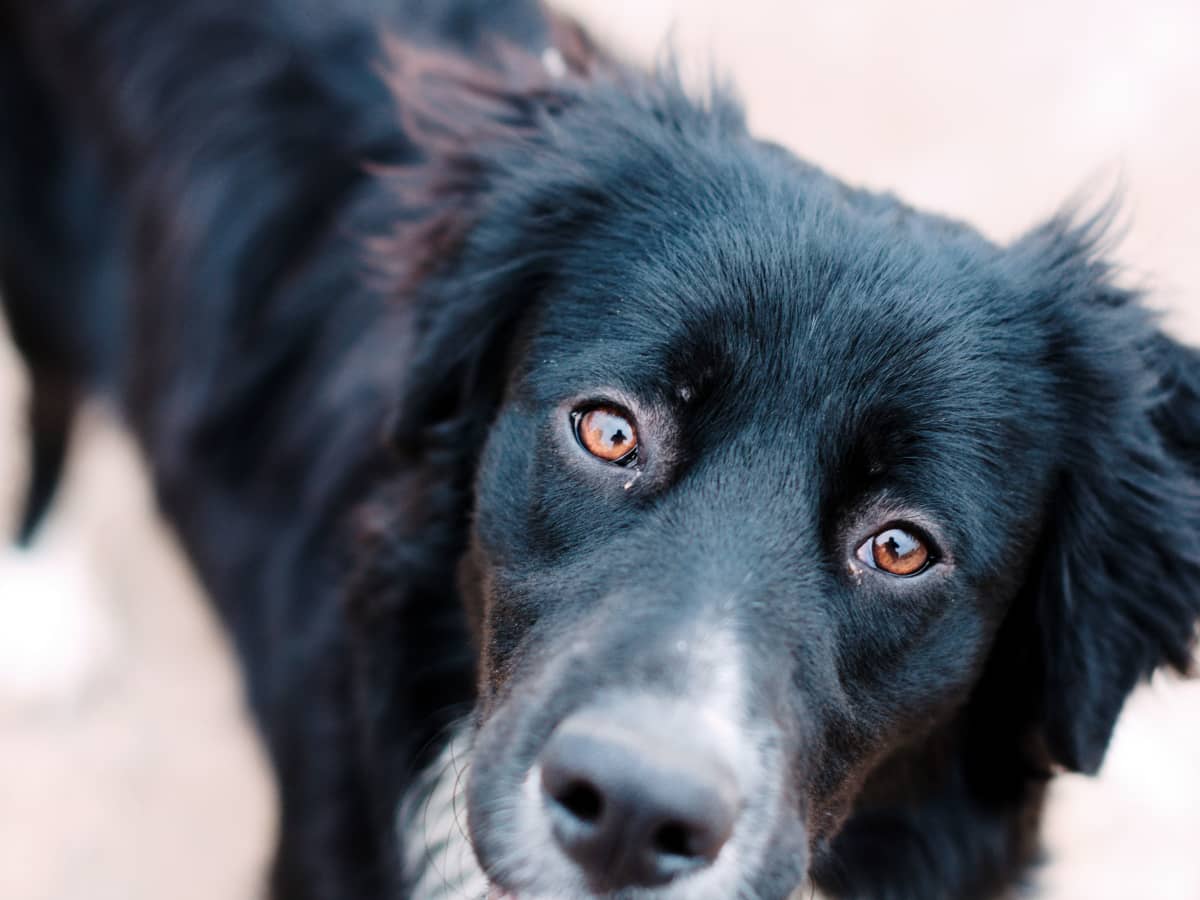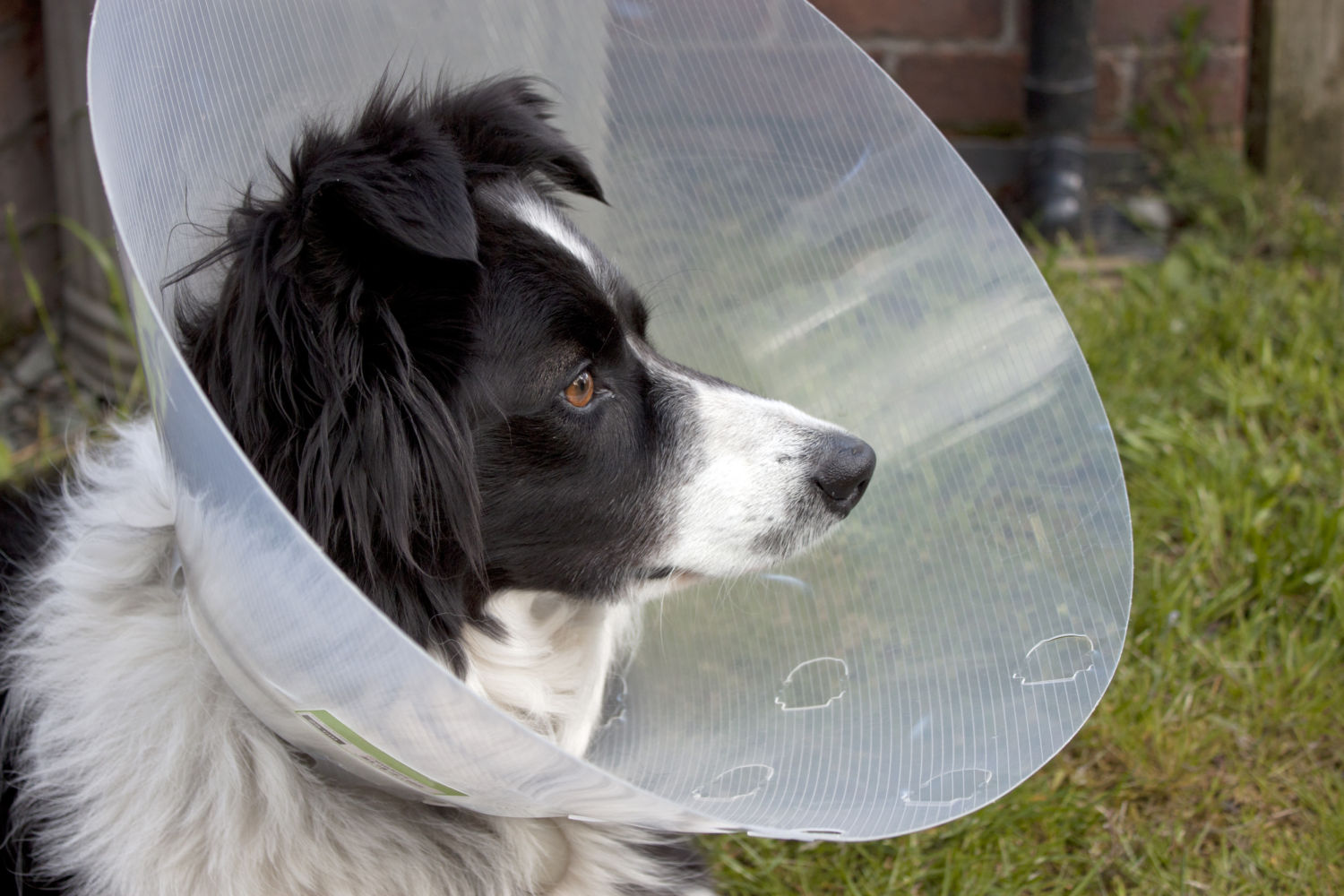Home>Health & Wellness>Common Health Issues>Eye and Ear Health>When Dogs Get Gunk In Their Eyes, What Does It Mean
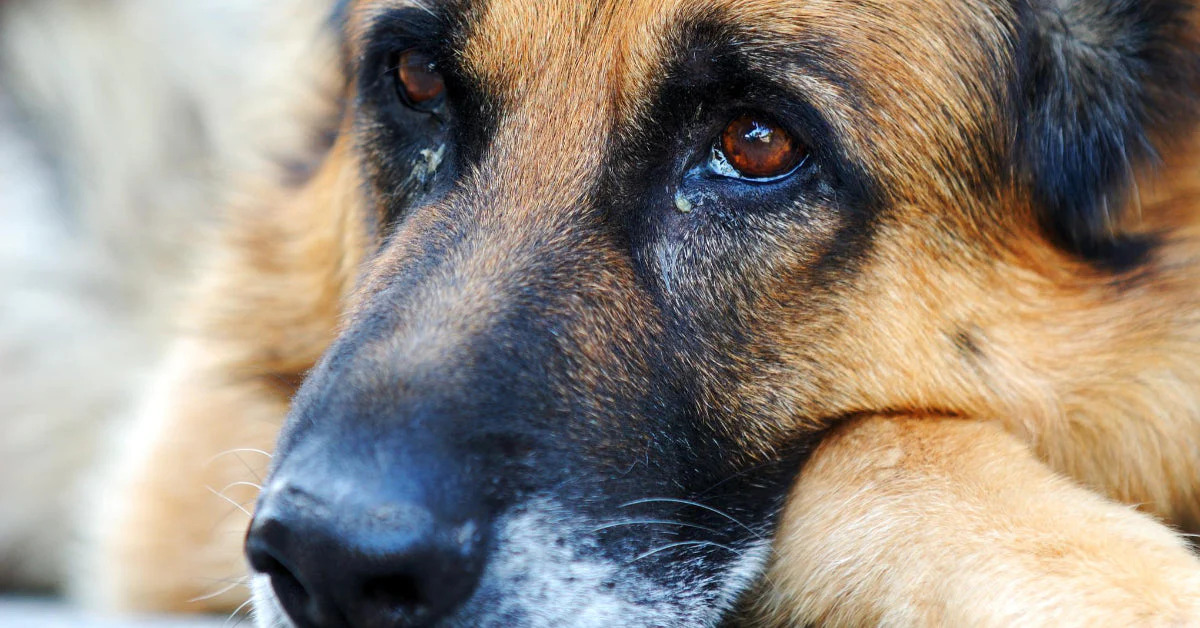

Eye and Ear Health
When Dogs Get Gunk In Their Eyes, What Does It Mean
Published: February 13, 2024
Learn about the causes and treatment of eye gunk in dogs. Discover how to maintain your dog's eye and ear health for a happy, active pet.
(Many of the links in this article redirect to a specific reviewed product. Your purchase of these products through affiliate links helps to generate commission for Pawsomeoldies.com, at no extra cost. Learn more)
Table of Contents
Introduction
When dogs get gunk in their eyes, it can be a cause for concern for pet owners. Just like humans, dogs can experience eye discharge, commonly referred to as "eye gunk." This discharge can range from clear and watery to thick and mucus-like, and it may be accompanied by other symptoms such as redness, swelling, or excessive blinking.
Understanding the underlying causes of eye gunk in dogs is crucial for ensuring the well-being of our furry companions. From environmental factors to health conditions, there are various reasons why dogs may develop eye discharge. By delving into the common causes and symptoms, as well as exploring when to seek veterinary care and how to address eye gunk at home, we can empower pet owners to provide the best possible care for their canine friends.
In this comprehensive guide, we will delve into the intricacies of eye gunk in dogs, shedding light on the potential triggers, warning signs, and proactive measures to maintain optimal eye health for our beloved pets. Whether you're a seasoned dog owner or a first-time pet parent, this article aims to equip you with valuable insights to navigate the nuances of canine eye care with confidence and compassion.
Common Causes of Eye Gunk in Dogs
Eye gunk in dogs can stem from a variety of factors, ranging from benign environmental irritants to more serious health issues. Understanding the common causes of eye discharge in dogs is essential for identifying potential triggers and addressing them effectively. Here are some prevalent reasons why dogs may develop eye gunk:
-
Allergies: Dogs, much like humans, can experience allergic reactions to environmental elements such as pollen, dust, mold, or certain grooming products. When allergens come into contact with a dog's eyes, they can trigger irritation and excessive tearing, leading to the accumulation of eye gunk.
-
Conjunctivitis: Also known as pink eye, conjunctivitis is characterized by inflammation of the conjunctiva, the thin membrane covering the eye and inner eyelids. This condition can be caused by bacterial or viral infections, allergies, or foreign objects in the eye, resulting in redness, discharge, and discomfort for the affected dog.
-
Dry Eye: Medically referred to as keratoconjunctivitis sicca (KCS), dry eye occurs when a dog's eyes do not produce enough tears to maintain proper lubrication. This can lead to the formation of thick, sticky discharge, potentially causing discomfort and increasing the risk of corneal damage.
-
Foreign Objects: Dogs are naturally curious creatures, and they may inadvertently get foreign objects such as dust, dirt, or plant material lodged in their eyes. This can lead to irritation, excessive tearing, and the formation of eye gunk as the eyes attempt to flush out the foreign particles.
-
Anatomical Issues: Certain breeds are predisposed to anatomical abnormalities that can contribute to eye gunk. For example, brachycephalic breeds with flattened faces, such as Bulldogs and Pugs, may experience eye discharge due to their unique facial structure, which can impede normal tear drainage.
-
Infections: Bacterial or viral infections, such as those caused by the bacteria Staphylococcus or the canine distemper virus, can lead to eye gunk as the body mounts an immune response to combat the invading pathogens.
Understanding these common causes of eye gunk in dogs empowers pet owners to recognize potential triggers and seek appropriate care for their furry companions. By staying vigilant and proactive, pet parents can play a pivotal role in maintaining their dogs' ocular health and overall well-being.
Symptoms to Look Out For
Recognizing the symptoms associated with eye gunk in dogs is crucial for identifying potential issues and taking proactive measures to address them. While occasional mild eye discharge is normal for dogs, certain symptoms may indicate underlying health concerns that warrant attention. Here are the key symptoms to look out for:
Excessive Eye Discharge:
Excessive or persistent eye discharge, especially if it is thick, colored, or accompanied by a foul odor, can signal an underlying problem. While clear and watery discharge may be a result of environmental factors or minor irritation, thick or colored discharge could indicate an infection, inflammation, or anatomical issues.
Redness and Swelling:
Redness and swelling around the eyes or within the conjunctival tissue can be indicative of irritation, inflammation, or infection. These symptoms may be accompanied by discomfort or itchiness, prompting the dog to paw at or rub its eyes.
Squinting or Excessive Blinking:
Dogs experiencing discomfort or pain in their eyes may exhibit squinting or excessive blinking as a natural response to alleviate their discomfort. Persistent squinting or blinking, especially when coupled with other symptoms, should prompt further evaluation by a veterinarian.
Rubbing or Pawing at the Eyes:
If a dog repeatedly rubs or paws at its eyes, it may be a sign of discomfort or irritation. This behavior can exacerbate existing eye issues and potentially lead to corneal abrasions or secondary infections.
Changes in Eye Appearance:
Any noticeable changes in the appearance of the eyes, such as cloudiness, opacity, or unusual bulging, should be promptly addressed. These changes may indicate underlying health conditions that require professional assessment and treatment.
Watery Eyes:
While watery eyes can be a response to environmental factors or mild irritation, persistent or excessive tearing may signal an underlying issue such as allergies, infections, or anatomical abnormalities.
Read more: What Does Dog Whale Eye Mean?
Behavioral Changes:
Changes in a dog's behavior, such as increased sensitivity to light, reluctance to engage in activities that typically involve visual stimuli, or overall discomfort, can be indicative of ocular discomfort or underlying eye problems.
By remaining attentive to these symptoms and promptly seeking veterinary care when necessary, pet owners can ensure that their dogs receive timely and appropriate treatment for any eye-related issues. Early intervention can help mitigate potential complications and promote the overall well-being of our canine companions.
When to Seek Veterinary Care
Recognizing the appropriate timing to seek veterinary care for a dog exhibiting eye gunk or related symptoms is paramount in safeguarding the animal's ocular health. While mild and transient eye discharge may not always necessitate immediate intervention, certain circumstances warrant prompt professional assessment and treatment. Pet owners should be attentive to the following indicators, signaling the need for veterinary care:
Persistent or Worsening Symptoms:
If a dog's eye gunk persists or worsens despite home care measures or if the accompanying symptoms, such as redness, swelling, or discomfort, become more pronounced over time, it is advisable to seek veterinary attention. Persistent or escalating symptoms may indicate an underlying health issue that requires professional evaluation and targeted intervention.
Unusual or Foul-Smelling Discharge:
The presence of unusual or foul-smelling eye discharge, such as thick, colored, or malodorous secretions, can be indicative of infections or other pathological conditions. When a dog's eye gunk exhibits atypical characteristics, it is essential to consult a veterinarian for a comprehensive assessment and appropriate treatment.
Behavioral Changes and Discomfort:
Behavioral changes, including increased sensitivity to light, excessive rubbing or pawing at the eyes, squinting, or reluctance to engage in visual activities, may signify ocular discomfort or pain. Dogs displaying such behaviors should be promptly evaluated by a veterinary professional to address potential underlying issues and alleviate their discomfort.
Trauma or Foreign Object Exposure:
In cases where a dog experiences trauma to the eye or is suspected of having a foreign object lodged in the eye, immediate veterinary care is imperative. Physical injuries or foreign bodies in the eye can lead to corneal abrasions, infections, or other complications, necessitating swift and expert attention.
Preexisting Health Conditions:
Dogs with preexisting health conditions, such as dry eye (keratoconjunctivitis sicca), anatomical abnormalities, or systemic illnesses that may impact ocular health, require regular monitoring and proactive veterinary care. Any changes in eye gunk consistency or associated symptoms should prompt a veterinary consultation to address potential exacerbations or complications.
By remaining vigilant and responsive to these indicators, pet owners can prioritize their dog's ocular well-being and collaborate with veterinary professionals to ensure timely and tailored care. Early intervention and proactive management of eye-related concerns can mitigate potential complications, promote optimal eye health, and contribute to the overall wellness of our beloved canine companions.
Home Remedies for Eye Gunk
When it comes to addressing mild cases of eye gunk in dogs, several home remedies can help alleviate discomfort and promote ocular health. It's important to note that while these remedies can offer temporary relief, they are not substitutes for professional veterinary care, especially in cases of persistent or severe symptoms. Here are some effective home remedies for managing eye gunk in dogs:
Read more: What Does A Dog Making Eye Contact Mean
Gentle Eye Cleansing:
Using a veterinarian-recommended eye wash or saline solution, gently cleanse the affected eye to remove accumulated discharge and debris. This can be done by saturating a clean, lint-free cloth or gauze pad with the solution and carefully wiping the eye from the inner corner outward. It's crucial to use a separate cloth for each eye to prevent cross-contamination.
Warm Compress:
Applying a warm, moist compress to the affected eye can help soothe irritation, soften dried discharge, and facilitate gentle removal. A clean, soft cloth can be moistened with warm water and applied to the eye for a few minutes, allowing the warmth to promote relaxation and aid in loosening any crust or debris.
Environmental Modifications:
Minimizing exposure to potential irritants such as dust, pollen, or smoke can help reduce eye irritation and excessive tearing. Keeping indoor environments clean and well-ventilated, especially in areas frequented by the dog, can contribute to overall ocular comfort.
Nutritional Support:
Incorporating omega-3 fatty acids into the dog's diet, under the guidance of a veterinarian, can support ocular health and reduce inflammation. Omega-3 supplements or dietary sources such as fish oil can help maintain tear film stability and mitigate certain underlying causes of eye gunk.
Hygiene and Grooming:
Maintaining proper grooming practices, including regular trimming of facial hair around the eyes and keeping the area clean, can minimize the accumulation of debris and reduce the risk of eye irritation. Additionally, ensuring that the dog's bedding and living spaces are clean and free from potential allergens can contribute to overall ocular comfort.
Monitoring and Observation:
Closely monitoring the dog's eye gunk and associated symptoms, while noting any changes or developments, is essential for gauging the effectiveness of home care measures and determining when professional intervention may be necessary.
By integrating these home remedies into a comprehensive approach to canine eye care, pet owners can provide supportive measures to address mild cases of eye gunk and promote ocular comfort for their beloved pets. However, it's crucial to seek veterinary guidance if the symptoms persist, worsen, or are accompanied by concerning indicators, ensuring that the dog receives appropriate and timely care tailored to its specific needs.
Preventing Eye Gunk in Dogs
Preventing eye gunk in dogs encompasses proactive measures aimed at maintaining optimal ocular health and minimizing the likelihood of eye-related issues. By implementing preventive strategies, pet owners can create a supportive environment that promotes clear, comfortable eyes for their canine companions. Here are several effective approaches to prevent eye gunk in dogs:
Regular Eye Examinations:
Scheduling routine eye examinations with a veterinarian is essential for monitoring the overall health and condition of a dog's eyes. These comprehensive assessments can help detect early signs of potential issues, allowing for timely intervention and tailored preventive measures.
Read more: How To Remove Eye Gunk From Dogs
Balanced Nutrition:
Providing a well-balanced diet that includes essential nutrients, such as vitamins A and E, and omega-3 fatty acids, supports ocular health in dogs. These nutrients contribute to maintaining the integrity of the eye tissues and the production of healthy tears, thereby reducing the risk of eye gunk and related discomfort.
Environmental Hygiene:
Maintaining a clean and hygienic living environment for dogs can minimize exposure to potential eye irritants, such as dust, pollen, and airborne pollutants. Regular cleaning of living spaces, bedding, and grooming areas helps reduce the accumulation of allergens and foreign particles that may contribute to eye irritation and discharge.
Regular Grooming:
Incorporating regular grooming practices, including gentle cleaning around the eyes and trimming of facial hair that could obstruct vision or contribute to eye irritation, supports ocular hygiene. Keeping the area around the eyes clean and free from excessive hair reduces the likelihood of debris accumulation and promotes ocular comfort.
Eye Protection:
In situations where a dog is exposed to potential eye hazards, such as during outdoor activities or in environments with airborne debris, using protective eyewear designed for dogs can help safeguard their eyes. This is particularly beneficial for dogs with a predisposition to eye issues or those engaging in activities with elevated ocular risks.
Read more: What Happens When Dogs Get Cancer
Allergen Management:
Identifying and managing potential allergens that may trigger allergic reactions in dogs is crucial for minimizing eye irritation and excessive tearing. This may involve limiting exposure to specific environmental allergens, using hypoallergenic grooming products, and consulting with a veterinarian to address underlying allergies.
Regular Exercise and Mental Stimulation:
Engaging dogs in regular physical exercise and mental stimulation supports their overall well-being, including ocular health. Physical activity and mental enrichment contribute to reduced stress levels, improved circulation, and overall vitality, which can positively impact eye health.
By integrating these preventive measures into a holistic approach to canine care, pet owners can proactively mitigate the risk of eye gunk in dogs and foster a supportive environment that prioritizes ocular comfort and well-being. Additionally, maintaining open communication with a veterinarian and seeking professional guidance when needed ensures that dogs receive personalized preventive care tailored to their unique needs.
Conclusion
In conclusion, understanding the nuances of eye gunk in dogs is pivotal for pet owners striving to provide comprehensive care for their beloved companions. From the common causes of eye discharge to the symptoms that warrant attention, this guide has shed light on the multifaceted aspects of canine ocular health. By recognizing the potential triggers, remaining vigilant for concerning symptoms, and knowing when to seek veterinary care, pet owners can play a proactive role in safeguarding their dogs' eye health.
Moreover, the exploration of home remedies and preventive strategies underscores the importance of a holistic approach to canine eye care. While home remedies can offer temporary relief for mild cases of eye gunk, they are not substitutes for professional veterinary care. By integrating these supportive measures and preventive strategies, pet owners can create an environment that promotes optimal ocular health for their furry companions.
Ultimately, prioritizing regular eye examinations, balanced nutrition, environmental hygiene, and allergen management can contribute to minimizing the likelihood of eye gunk and related discomfort in dogs. By fostering open communication with veterinary professionals and seeking timely intervention when necessary, pet owners can ensure that their dogs receive tailored care aligned with their specific needs.
In the journey of canine companionship, the well-being of our dogs remains a paramount concern. By equipping ourselves with knowledge, empathy, and a proactive mindset, we can navigate the intricacies of canine eye health with confidence and compassion. Through ongoing vigilance, preventive measures, and collaborative care, we can strive to provide our dogs with a life enriched by clear, comfortable eyes and an unwavering bond of care and companionship.
